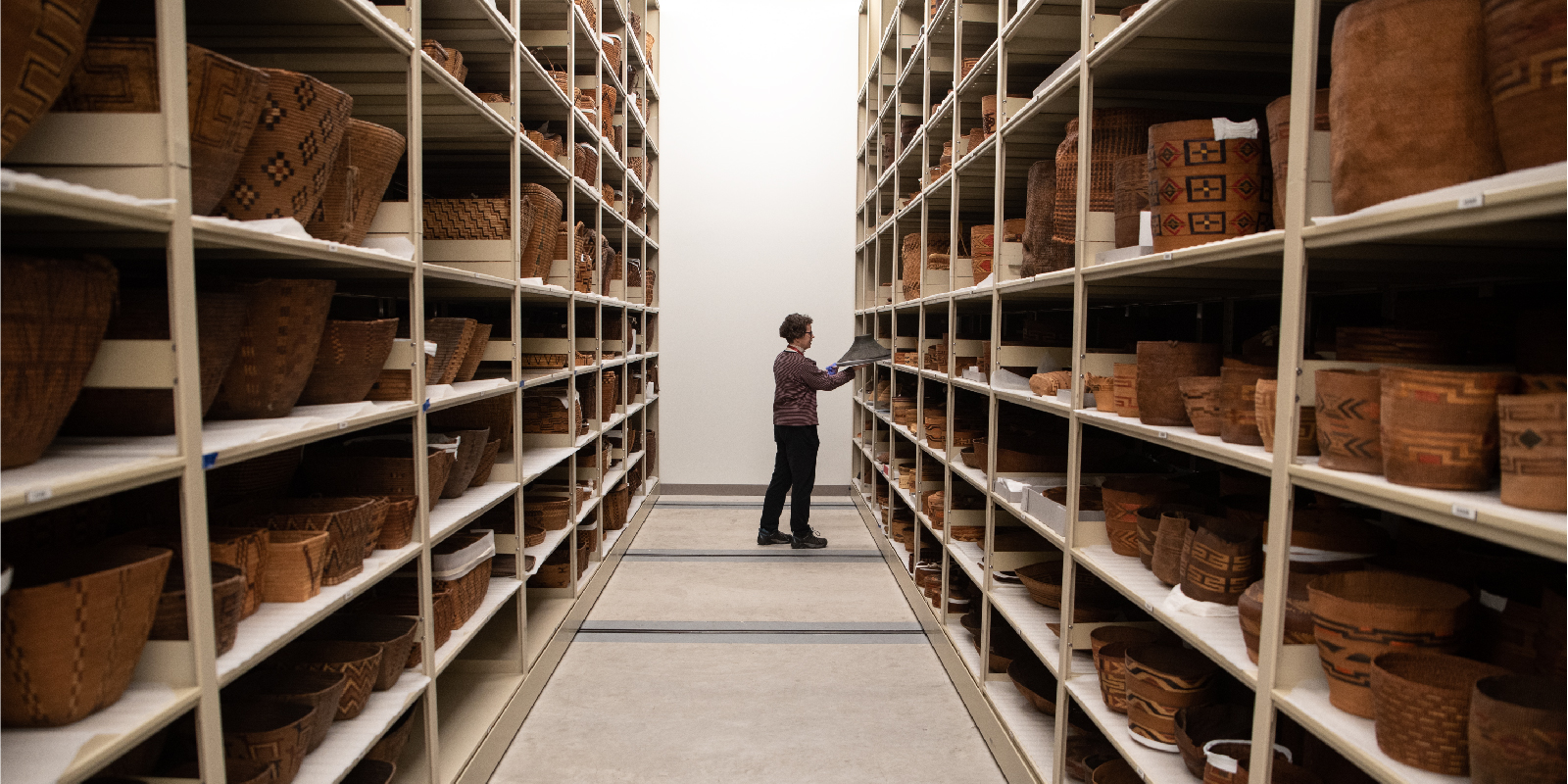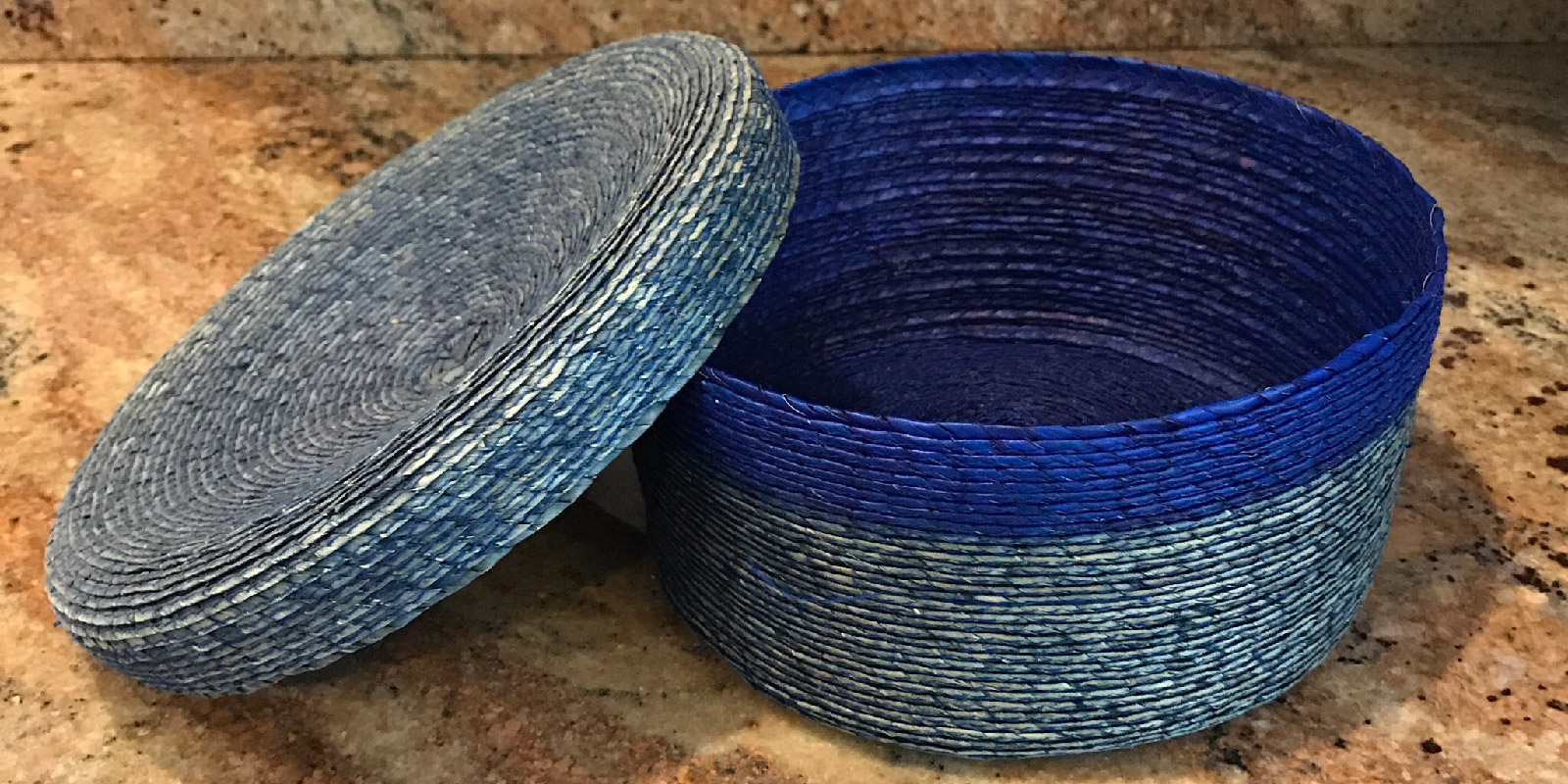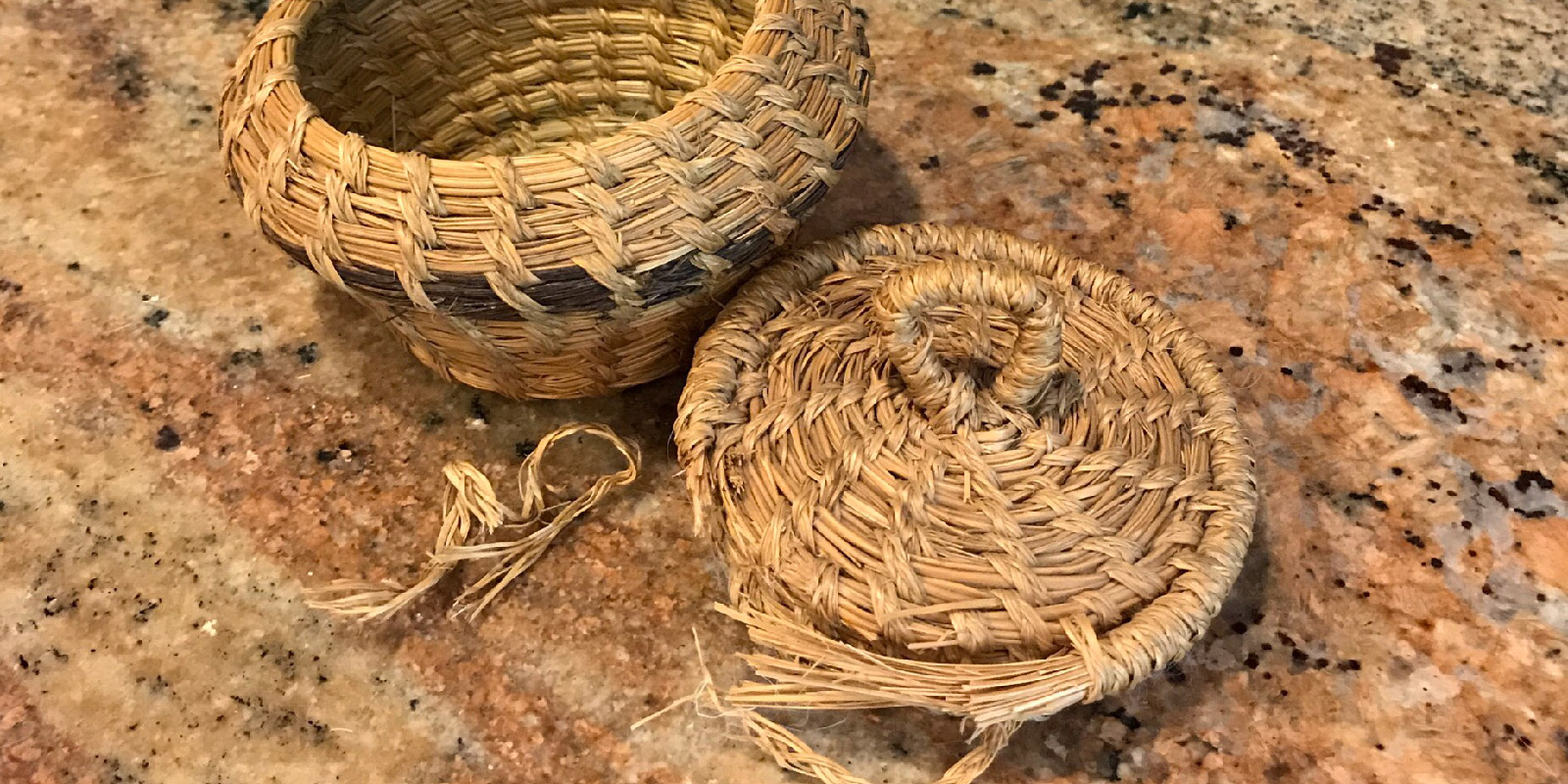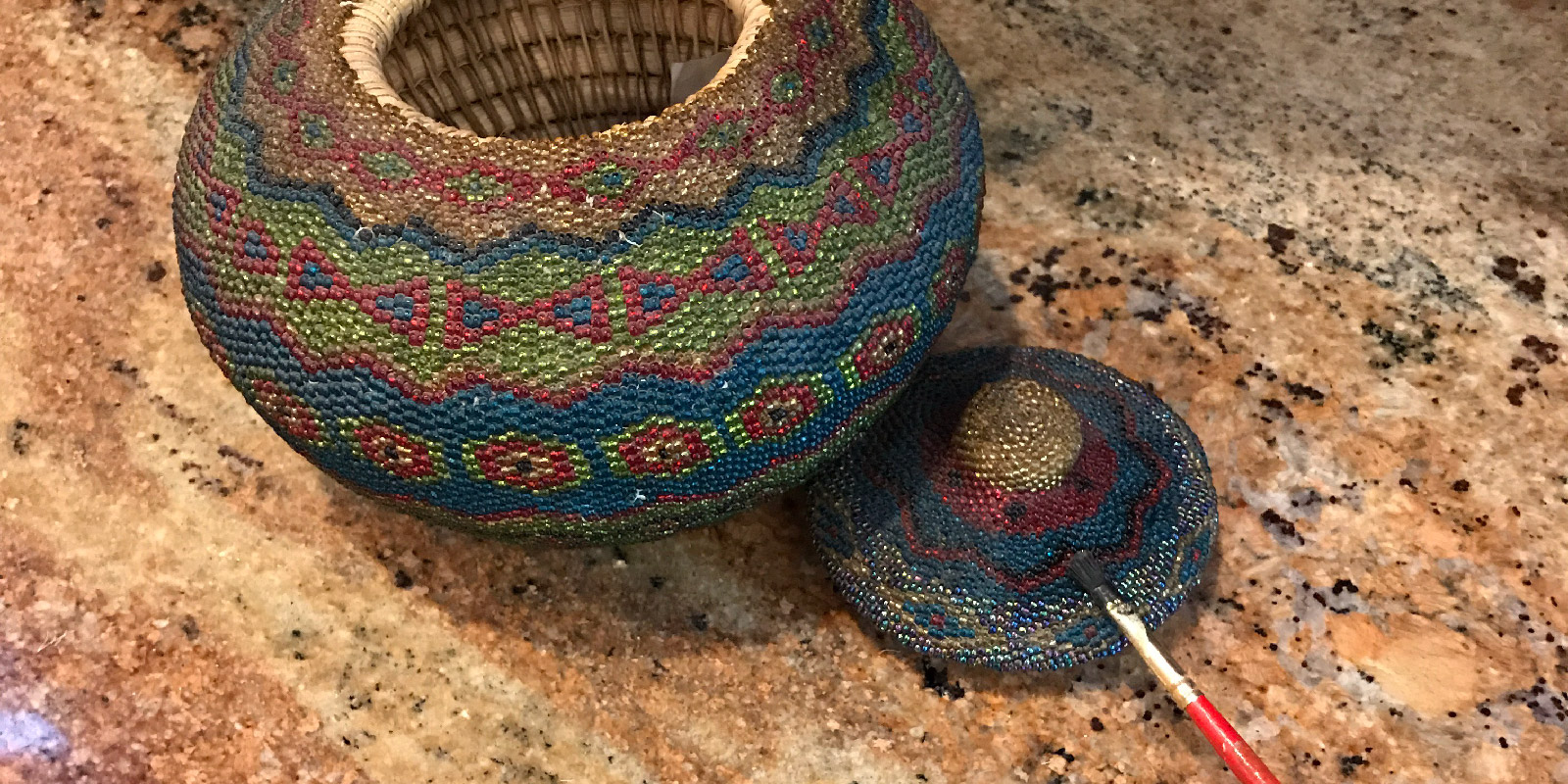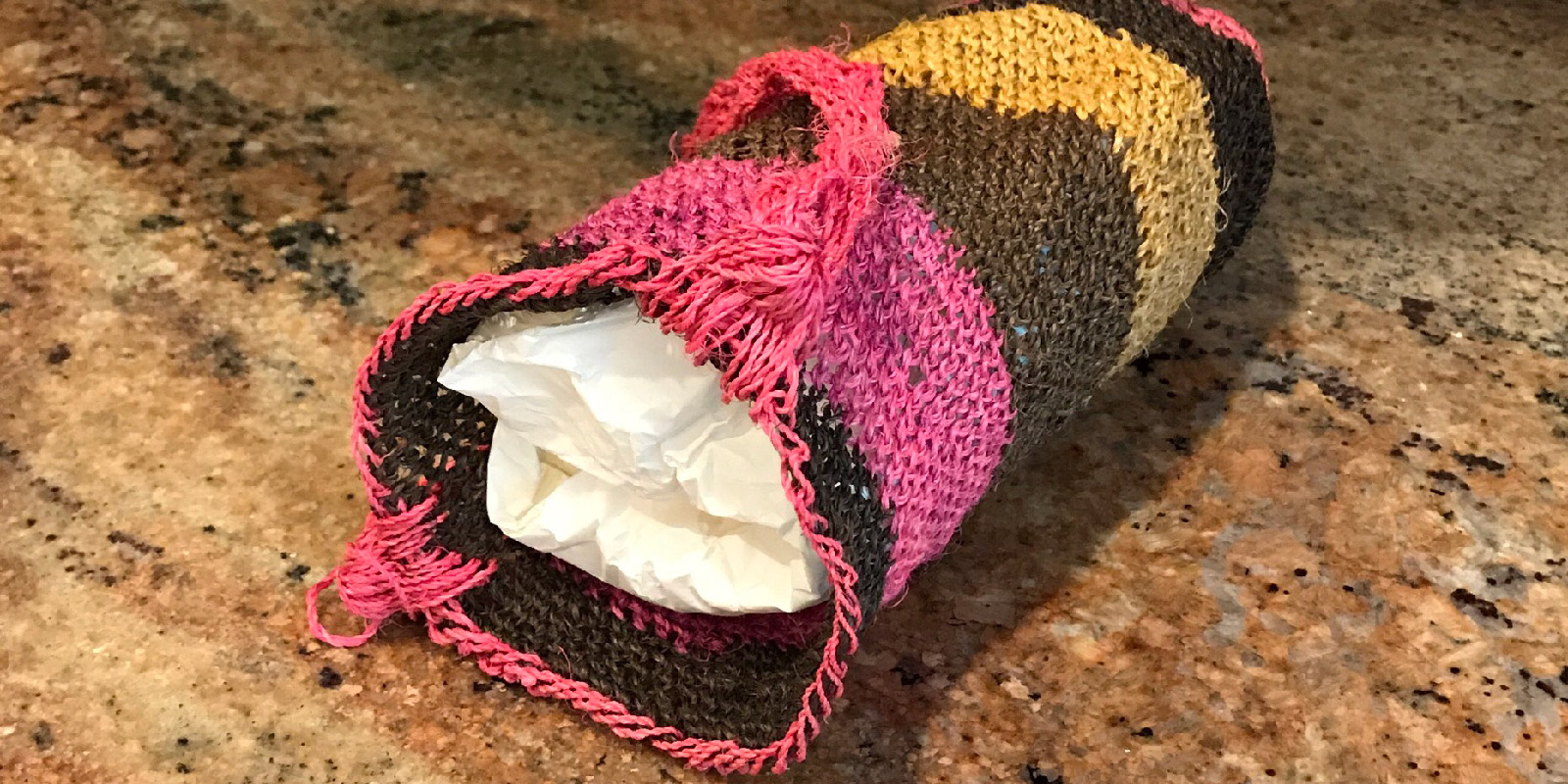1) Provide a stable environment
While the weather outside will vary widely throughout the year, try to create a stable environment inside your home where the humidity and temperature stay relatively constant. If you can, avoid storing baskets in attics or basements, as attics are often too hot and dry and basements are often too cool and damp. In the cooler months, consider getting a dehumidifier to keep the fibers in your basket from becoming too saturated with water where mold can grow. Some people keep their baskets in display cases, which will help moderate changes in the humidity.
2) Keep baskets out of direct sunlight
Sunlight can quickly change the look and feel of a basket, especially baskets with dyed material. UV radiation will fade the color of dyes and the natural color of plant fibers, so avoid placing baskets anywhere where they spend long periods of time in direct sunlight. If you have many windows, consider placing your baskets in boxes or on a shelf shielded from the sun.
3) Handle baskets carefully
When handling your baskets, it’s important to remember that repeated wear and tear in a specific place can fray or damage the weave pattern. Always use two hands to pick up your basket and place your hands on the walls near the base because these are much stronger and more resistant to fraying. Even if your basket has a handle, hold the basket by the walls because handles will break after repeated use. Some older baskets may have been treated with arsenic or other chemicals, so consider wearing gloves while handling them. Some baskets will hold their shape well over the years while others start to sag and would benefit greatly by being gently supported from the interior with acid-free tissue paper.
4) Keep pests away
There are many different pests such as dermestid beetles, clothing moths, and carpet beetles that will eat organic material baskets are made from (plant material, feathers, wool, quills, baleen, etc.), so be sure to check your baskets for damage every six months. To ensure baskets are pest-free, you can put the baskets in a ziploc bag, push all the air out and freeze it for about two weeks. Repeat this freezing and thawing process at least twice, keeping the bagged up the entire time. If you do that every six months, then you’re going to kill any of the bugs that might be eating away at the basketry. It’s important to clean any old insect debris off the basket so you can recognize new insect activity..
5) Don’t get your basket wet
Wet baskets are a playground for mold spores in the air and the Pacific Northwest has a lot of mold ready to find a place to land. Many colored baskets use water soluble dyes that can be washed away or faded by water. If your basket does get wet, be sure to let it dry in an environment that won’t dry out the fibers too much, such as a shaded area of your home or a room with humidity control.
6) Clean dust off your basket
Using a clean, soft artist's brush, feel encouraged to gently brush the dust off of your baskets. A very light vacuuming with a micro-attachment kit can also work well. Most baskets don’t need deep cleaning, so regular dusting should be all that most baskets need to maintain their vibrance.
7) Make ID tags for your basket
In the museum, every single piece in the collection has its own identification tag with all the information known about it. This helps us find specific baskets in the collection and for visiting artists to learn about the history of that piece—who made it, where it came from, what materials it’s made out of. Consider doing this for baskets in your own collection. It could also help you learn new things about your own baskets!
8) Keep hand sanitizer away from baskets
During the Covid-19 pandemic, we’re all using more hand sanitizer than ever, so be sure to wash your hands before handling your baskets. Sanitizer could leave a residue on the fibers that will be difficult to remove later on and it could also leach natural and dyed colors from the fibers.
9) Seek out an expert for repairs
Baskets are often made from natural materials and sometimes damage is unavoidable, but be sure to seek out an expert when repairing your baskets. Sometimes trying to repair them on your own can make the damage worse unintentionally . If a basket starts to fray or a piece breaks off, be sure to save it in a safe place and consult an expert.
